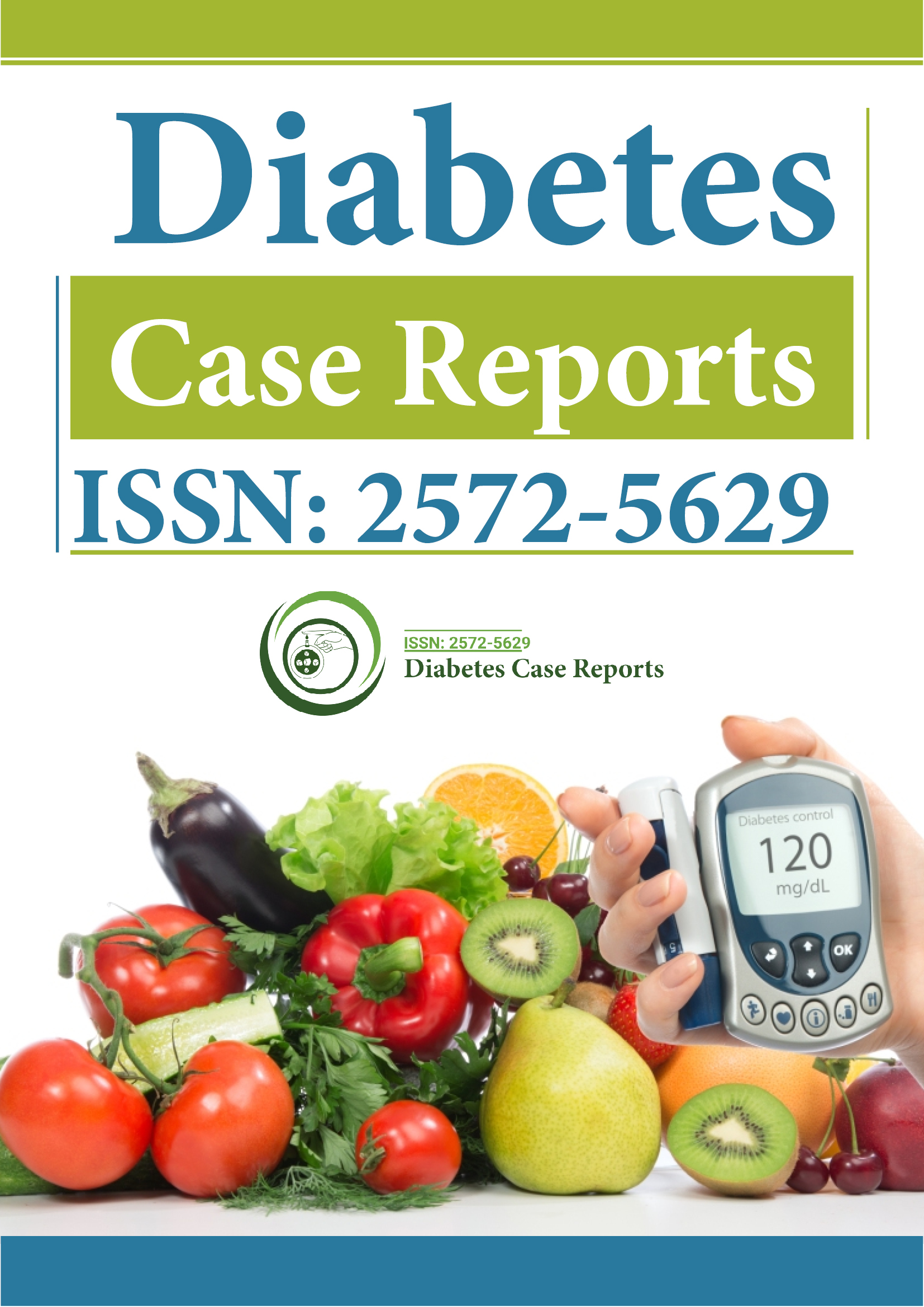Indexed In
- RefSeek
- Hamdard University
- EBSCO A-Z
- Euro Pub
- Google Scholar
Useful Links
Share This Page
Journal Flyer

Open Access Journals
- Agri and Aquaculture
- Biochemistry
- Bioinformatics & Systems Biology
- Business & Management
- Chemistry
- Clinical Sciences
- Engineering
- Food & Nutrition
- General Science
- Genetics & Molecular Biology
- Immunology & Microbiology
- Medical Sciences
- Neuroscience & Psychology
- Nursing & Health Care
- Pharmaceutical Sciences
Commentary - (2023) Volume 8, Issue 6
Telemedicine in Diabetes: Balancing Glycemic Control and its Complication Management
Krista Ellahham*Received: 01-Nov-2023, Manuscript No. DCRS-23-24186; Editor assigned: 03-Nov-2023, Pre QC No. DCRS-23-24186(PQ); Reviewed: 23-Nov-2023, QC No. DCRS-23-24186; Revised: 01-Dec-2023, Manuscript No. DCRS-23-24186(R); Published: 08-Dec-2023, DOI: 10.35841/2572-5629-23.8.193
Description
Telemedicine is the use of virtual healthcare visits and telehealth tools to manage diabetes. It can improve blood glucose control and some diabetes-related outcomes, as well as save time, cost, and increase patient satisfaction and adherence. Challenging situations such as insulin pump training or new-onset diabetes. It requires data from meter, pump, and sensor downloads, and sometimes vital signs from the patient. It has become more popular and accessible during the COVID-19 pandemic, as it provides a safe and convenient way to deliver diabetes care remotely. The disruption in traditional diabetes care resulting from the pandemic led to global interest in telemedicine. Several studies have evaluated the use of telemedicine for the management of diabetes during the pandemic and its impact on glycemic control, focusing on retrospective and prospective studies which included adult, non-pregnant patients with diabetes. One of the main benefits of telemedicine is that it can facilitate the use of Continuous Glucose Monitoring (CGM) devices, which can provide real-time feedback on glucose levels, trends, and alerts. CGM can help patients who require insulin to reduce A1C levels, avoid hypoglycemia, and improve patient satisfaction. CGM data can be shared with the healthcare provider via cloud-based platforms, allowing for remote adjustment of insulin doses and education. A randomized controlled trials found that CGM improved A1C levels by 0.4% compared with self-monitoring of blood glucose in adults with type 1 or type 2 diabetes. CGM reduces the risk of severe hypoglycemia by 52% in adults with type 1 diabetes.
Diabetes prevention program aims to reduce the risk of developing type 2 diabetes in high-risk individuals. These programs usually involve lifestyle interventions such as dietary counseling, physical activity, and weight management. It can deliver these interventions through online platforms, mobile applications, or telephone calls. A meta-analysis of telemedicine is based upon diabetic prevention programs were effective in reducing weight, fasting glucose, and A1C levels in high-risk individuals. Diabetic retinopathy is a common and potentially blinding complication of diabetes, which can be prevented or treated if detected early. However, many patients with diabetes do not undergo regular eye examinations due to barriers such as access, cost, or lack of awareness. Teleretinal screening can overcome these barriers by providing a convenient and low-cost option for retinopathy screening in those who have access to this technology. The teleretinal screening increases the screening rates from 21% to 82% in patients with diabetes. Another systematic review found that teleretinal screening was cost-effective compared with usual care, and could reduce the rates of blindness by 9.4%.
It can be useful for the comprehensive management of diabetes, which involves not only glycemic control, but also the assessment and treatment of other diabetes-related complications, such as cardiovascular disease, nephropathy, neuropathy, and foot ulcers. It can provide a holistic approach to diabetes care by incorporating multidisciplinary teams, such as nurses, dietitians, pharmacists, psychologists, and podiatrists. It can also enable patient-centered care by addressing the individual needs, preferences, and goals of each patient. It has some challenges and limitations, such as the need for adequate technology, internet access, and digital literacy among patients and providers. The requirement of data security and privacy, as well as legal and regulatory frameworks to ensure the quality and safety of care. It may not be suitable for all patients or situations, and may not replace the need for in-person visits, especially for physical examinations, laboratory tests, or procedures.
Conclusion
It should be used in addition to in-person visits to optimize diabetes care, and should be customized to the specific needs and preferences of each patient. Effective and convenient tool for the management of diabetes, especially during the COVID-19 pandemic. It can improve glycemic control and some diabetesrelated outcomes, as well as save time, cost, and increase patient satisfaction and adherence. It can also be used for challenging situations such as insulin pump training or new-onset diabetes.
It requires data from meter, pump, and sensor downloads, and sometimes vital signs from the patient. It has some challenges and limitations, such as the need for adequate technology, internet access, and digital literacy among patients and providers. It should be used in addition to in-person visits to optimize diabetes care, and should be customized to the specific nee ds and preferences of each patient.
Citation: Ellahham K (2023) Telemedicine in Diabetes: Balancing Glycemic Control and its Complication Management. Diabetes Case Rep. 8:193.
Copyright: © 2023 Ellahham K. This is an open-access article distributed under the terms of the Creative Commons Attribution License, which permits unrestricted use, distribution, and reproduction in any medium, provided the original author and source are credited.
